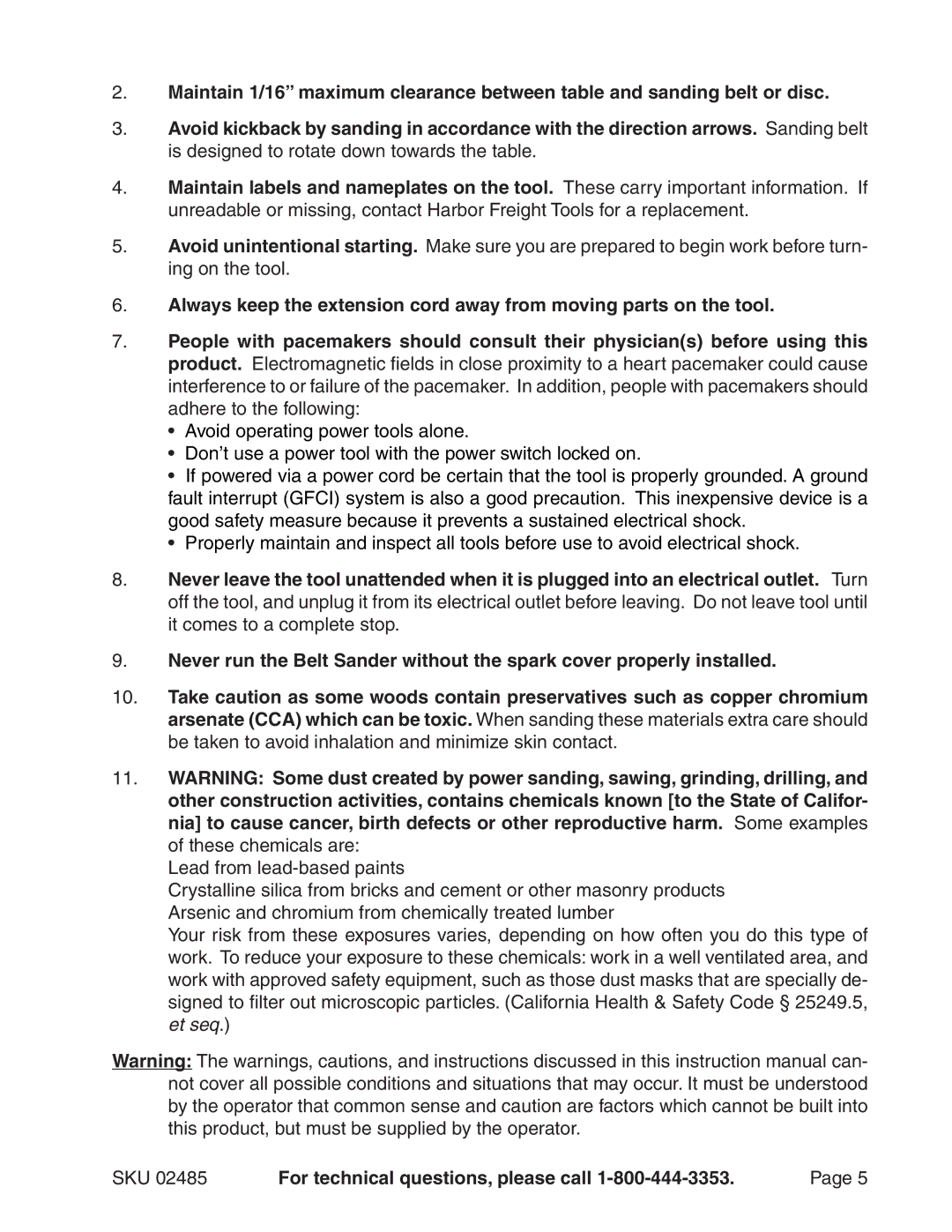2.Maintain 1/16” maximum clearance between table and sanding belt or disc.
3.Avoid kickback by sanding in accordance with the direction arrows. Sanding belt is designed to rotate down towards the table.
4.Maintain labels and nameplates on the tool. These carry important information. If unreadable or missing, contact Harbor Freight Tools for a replacement.
5.Avoid unintentional starting. Make sure you are prepared to begin work before turn- ing on the tool.
6.Always keep the extension cord away from moving parts on the tool.
7.People with pacemakers should consult their physician(s) before using this product. Electromagnetic fields in close proximity to a heart pacemaker could cause interference to or failure of the pacemaker. In addition, people with pacemakers should adhere to the following:
•Avoid operating power tools alone.
•Don’t use a power tool with the power switch locked on.
•If powered via a power cord be certain that the tool is properly grounded. A ground fault interrupt (GFCI) system is also a good precaution. This inexpensive device is a good safety measure because it prevents a sustained electrical shock.
•Properly maintain and inspect all tools before use to avoid electrical shock.
8.Never leave the tool unattended when it is plugged into an electrical outlet. Turn off the tool, and unplug it from its electrical outlet before leaving. Do not leave tool until it comes to a complete stop.
9.Never run the Belt Sander without the spark cover properly installed.
10.Take caution as some woods contain preservatives such as copper chromium arsenate (CCA) which can be toxic. When sanding these materials extra care should be taken to avoid inhalation and minimize skin contact.
11.WARNING: Some dust created by power sanding, sawing, grinding, drilling, and other construction activities, contains chemicals known [to the State of Califor- nia] to cause cancer, birth defects or other reproductive harm. Some examples of these chemicals are:
Lead from
Crystalline silica from bricks and cement or other masonry products Arsenic and chromium from chemically treated lumber
Your risk from these exposures varies, depending on how often you do this type of work. To reduce your exposure to these chemicals: work in a well ventilated area, and work with approved safety equipment, such as those dust masks that are specially de- signed to filter out microscopic particles. (California Health & Safety Code § 25249.5, et seq.)
Warning: The warnings, cautions, and instructions discussed in this instruction manual can- not cover all possible conditions and situations that may occur. It must be understood by the operator that common sense and caution are factors which cannot be built into this product, but must be supplied by the operator.
SKU 02485 | For technical questions, please call | Page |
